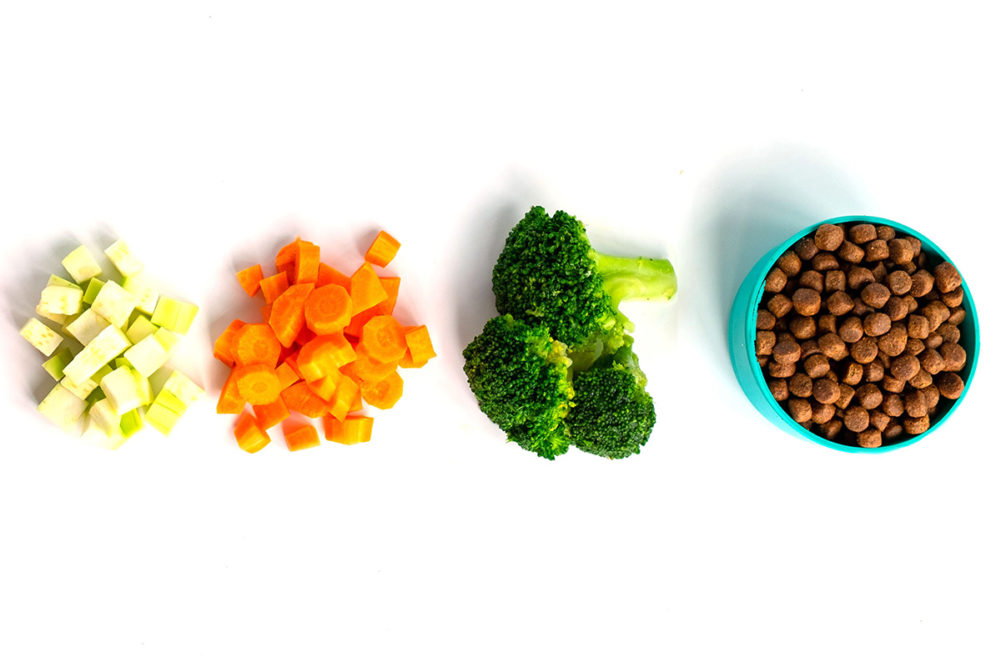ARLINGTON, VA. — Animal food consumption and the value of those products in the agricultural economy were still strong in 2020, largely undeterred by the COVID-19 pandemic, according to the Institute for Feed Education and Research (IFEEDER).
“In 2017, IFEEDER released first-of-its-kind research that gave the US animal feed industry the most precise, comprehensive analysis of the diverse ingredients used and consumed by domestic livestock,” said Robert Cooper, executive director of IFEEDER. “Our study now includes new ingredients, such as forages and other roughage products, and species, such as dogs and cats, to provide the most accurate picture of the enormous volume of animal food consumed annually.”
Decision Innovation Solutions (DIS), an economic and analysis firm that partnered with IFEEDER to conduct the study, also offered insight on how the pandemic could affect growth of the industry over the next five years.
“This report demonstrates that supporting our essential agricultural workforce with better access to COVID-19 prevention tools, testing and vaccines in rural America will have a positive impact on our long-term economic growth and contribution to local economies,” said Constance Cullman, president and chief executive officer of the American Feed Industry Association (AFIA). “Our industry has responded and adapted very well to the new way of safely operating during the crisis and our local and state policy leaders can show their support by continuing to prioritize these workers in their vaccine rollouts and COVID response plans.”
In 2019, domestic livestock and pets in the United States consumed 283.8 million tons of food. Beef cattle, hogs and chickens were the top three animal food consumers that year, with dogs and cats coming in at 8.6 million tons. Under dogs and cats were horses (7.7 million tons), aquaculture (613,000 tons), and sheep and meat goats (139,000 tons).
Roughly 50% of estimated dog and cat food consumption in 2019 came from “unique ingredients not commonly used as feed ingredients,” IFEEDER shared. This includes fruits, vegetables, peas, and other ingredients. Corn was the second-most prevalent ingredient at 16%. Animal byproduct meals, soybean meal, and corn gluten meal made up roughly 75% of total pet food consumption in the United States.
Read more about the US pet food ingredient market and how it contributes to the agricultural economy.
Wheat, inedible tallow, wheat middlings and wheat bran, grain sorghum, barley, and other feed ingredients comparable to other species included in the study, made up at least 1% each of total pet food tonnage.
Texas, California, Florida, New York and Ohio were the top-five states in terms of total pet food tonnage consumed in 2019. In total, those five states consumed roughly 2.9 million tons.
Feed focus
Corn accounted for more than half (52%) of total animal food consumed in 2019. Soybean meal and dried distillers’ grains with solubles made up 12% and 11% respectively. When combined with corn ingredient consumption, these three categories represented more than 75% of all feed tonnage consumed in 2019, IFEEDER shared. Other ingredients most commonly consumed include wheat middlings and wheat bran (3%), animal byproduct meals (3%), corn gluten meals (2%), canola meal (2%), animal fats (2%), and other processed plant byproducts (1%).
The study revealed animals residing in five states — Iowa, Texas, California, North Carolina and Minnesota — consumed the most animal food in 2019, with Iowa representing the most consumption at 28.8 million tons and Minnesota representing the least of the five at 14.6 million tons. Animal food consumption in Nebraska fell since IFEEDER’s previous animal food consumption report, due to lower cattle numbers. California’s animal food consumption rose from the previous report due to increased dairy and beef cattle populations and broiler chicken production.
COVID-19 impacts through 2025
DIS estimated three scenarios — a best case, expected case and worst case — established from a baseline of value and volume from US Department of Agriculture (USDA) data released November 2020 for the six major livestock and poultry categories: broilers, layers, turkeys, hogs, dairy cows and beef cattle.
In the best-case scenario, animal food consumption is projected to grow from 248.4 million tons (a value of $47.5 billion) in 2020 to 263.1 million tons ($50.4 billion) in 2025. The expected scenario is a less dramatic increase to 254.5 million tons ($48.8 billion), and the worst-case scenario projects animal food consumption to fall to 237.2 million tons ($45.4 billion) in 2025.
“The demand for animal food is strong and continues to grow, despite the COVID-19 pandemic,” Cooper said. “While we may feel some of the short-term economic repercussions and disruptions to the food chain from the coronavirus pandemic, our industry is resilient and well-positioned to continue supporting America’s food and pet food supply for the future.”
Stay up to date on the latest pet food processing industry headlines on our News page.




